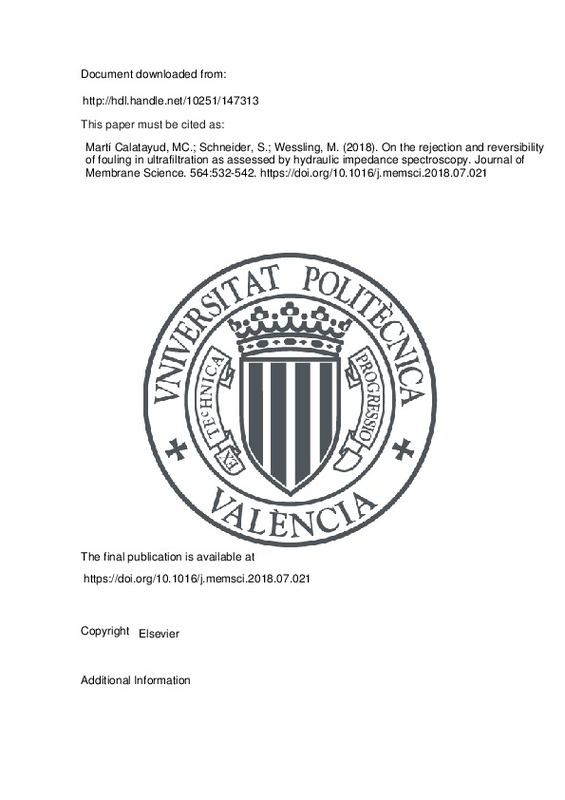JavaScript is disabled for your browser. Some features of this site may not work without it.
Buscar en RiuNet
Listar
Mi cuenta
Estadísticas
Ayuda RiuNet
Admin. UPV
On the rejection and reversibility of fouling in ultrafiltration as assessed by hydraulic impedance spectroscopy
Mostrar el registro completo del ítem
Martí Calatayud, MC.; Schneider, S.; Wessling, M. (2018). On the rejection and reversibility of fouling in ultrafiltration as assessed by hydraulic impedance spectroscopy. Journal of Membrane Science. 564:532-542. https://doi.org/10.1016/j.memsci.2018.07.021
Por favor, use este identificador para citar o enlazar este ítem: http://hdl.handle.net/10251/147313
Ficheros en el ítem
Metadatos del ítem
| Título: | On the rejection and reversibility of fouling in ultrafiltration as assessed by hydraulic impedance spectroscopy | |
| Autor: | Schneider, S. Wessling, Matthias | |
| Entidad UPV: |
|
|
| Fecha difusión: |
|
|
| Resumen: |
[EN] The manifestation of critical fluxes in membrane filtration has typically served to set an upper value above which detrimental fouling events and a substantial increase of membrane resistance occurs. Despite the ...[+]
|
|
| Palabras clave: |
|
|
| Derechos de uso: | Reconocimiento - No comercial - Sin obra derivada (by-nc-nd) | |
| Fuente: |
|
|
| DOI: |
|
|
| Editorial: |
|
|
| Versión del editor: | https://doi.org/10.1016/j.memsci.2018.07.021 | |
| Código del Proyecto: |
|
|
| Agradecimientos: |
M.W. acknowledges the support through an Alexander-von-Humboldt Professorship. M.C. Marti-Calatayud is grateful for the funding received from the Generalitat Valenciana (APOSTD/2017/059). M.C. Marti-Calatayud also appreciates ...[+]
|
|
| Tipo: |
|







![[Cerrado]](/themes/UPV/images/candado.png)


